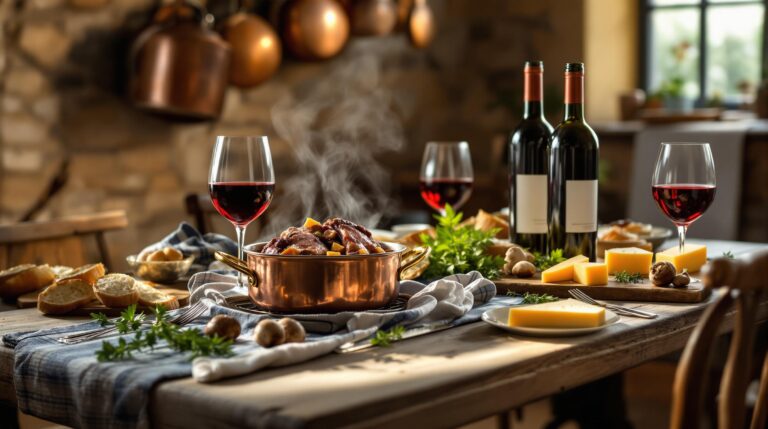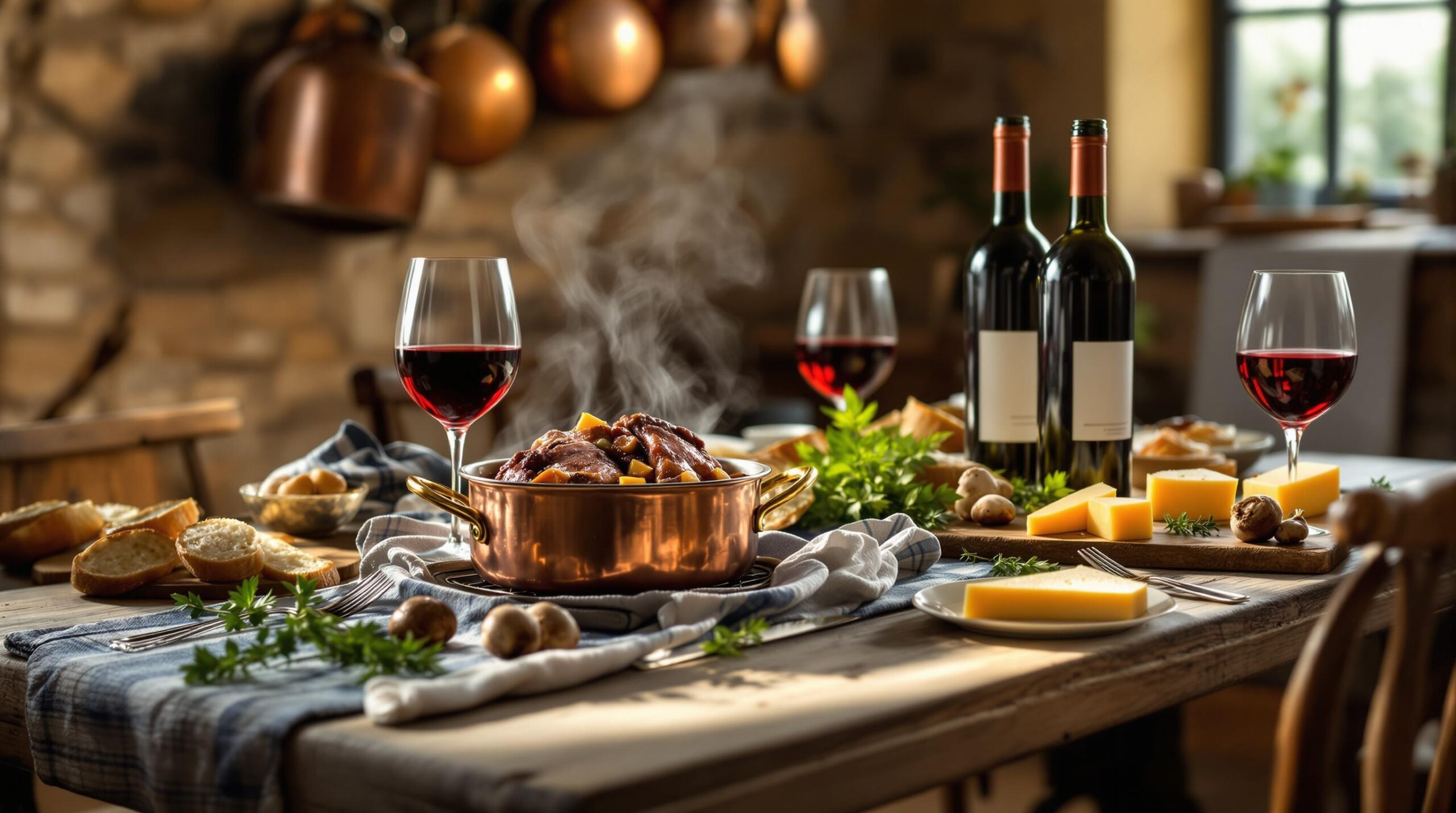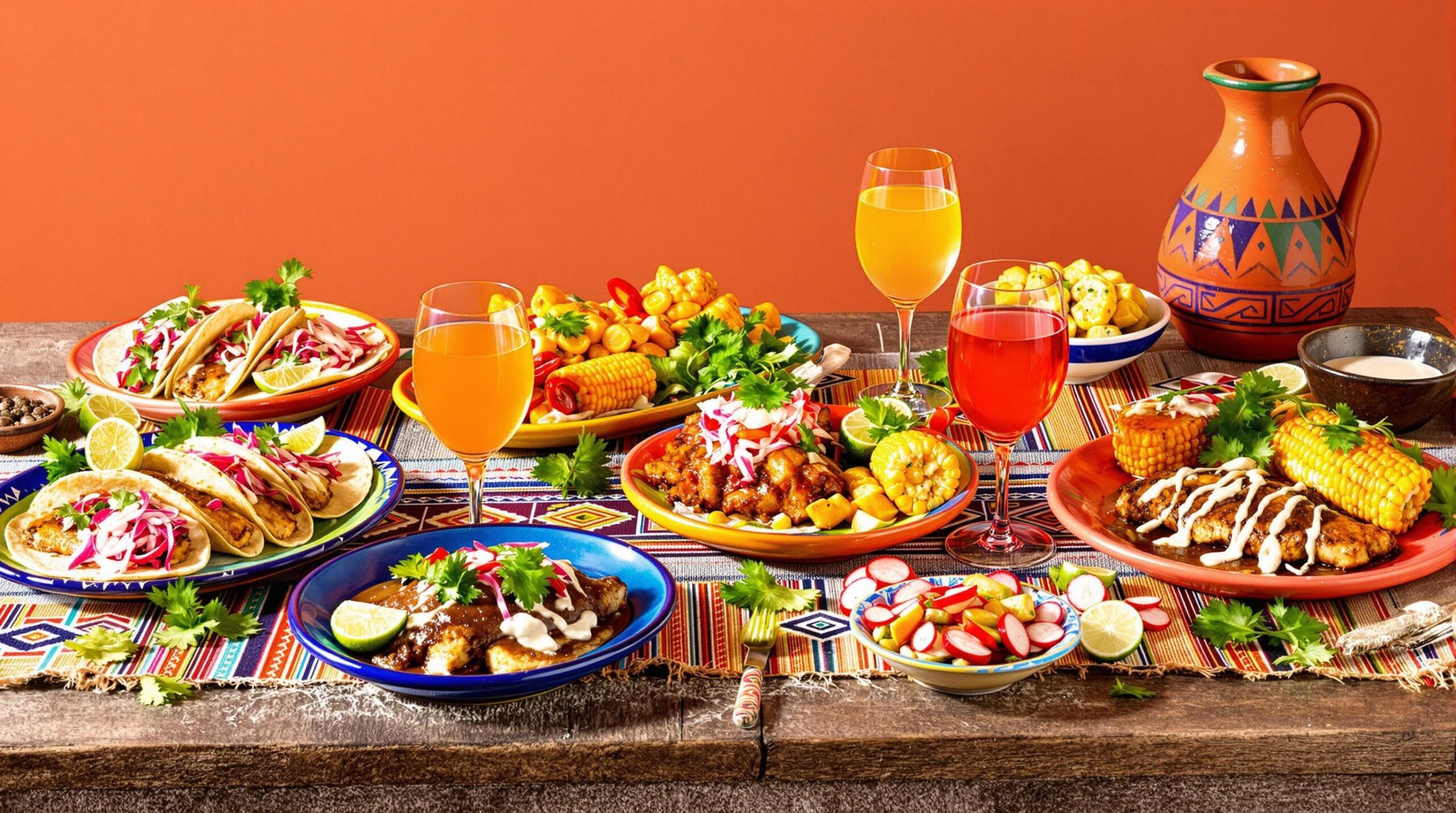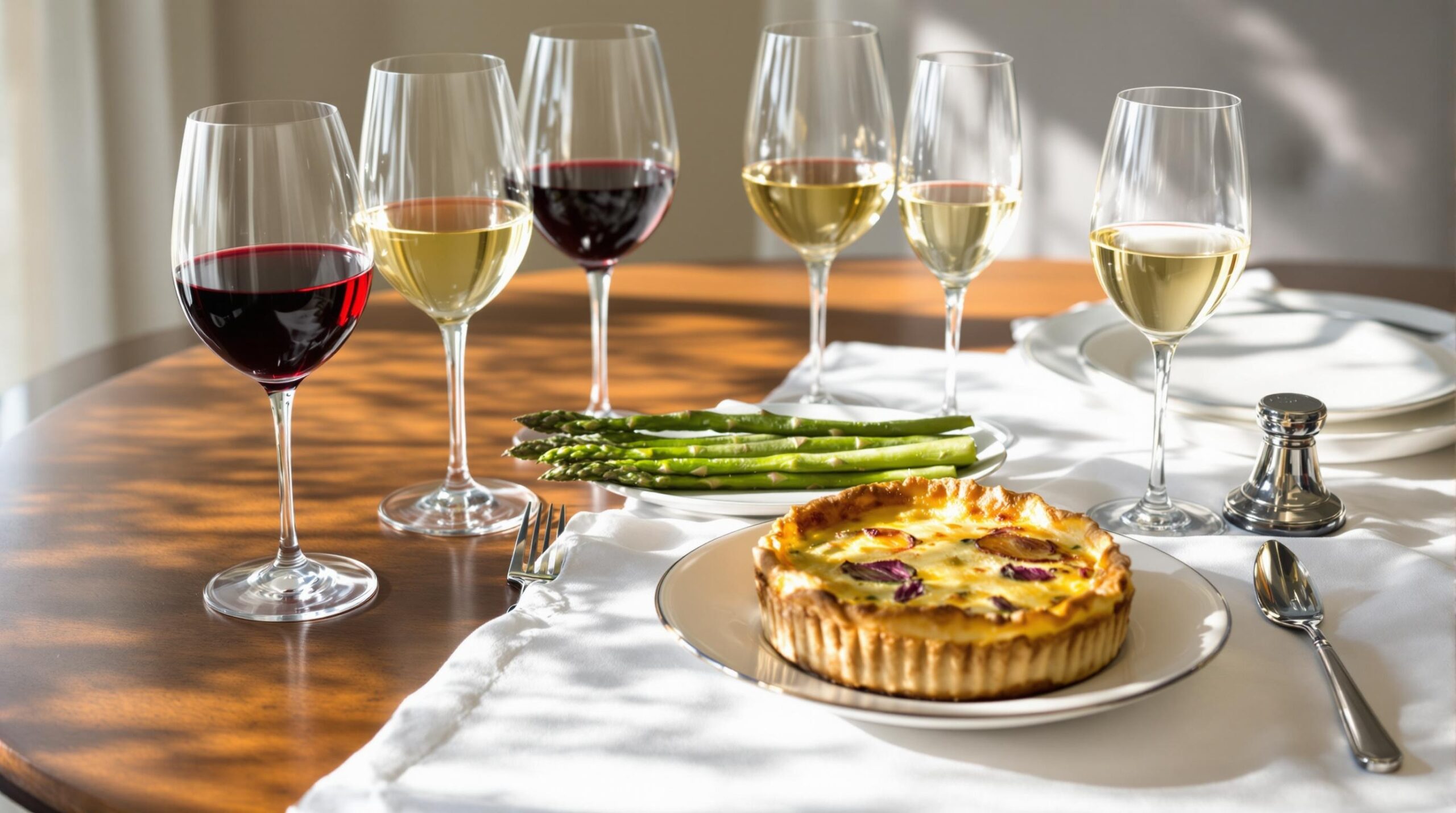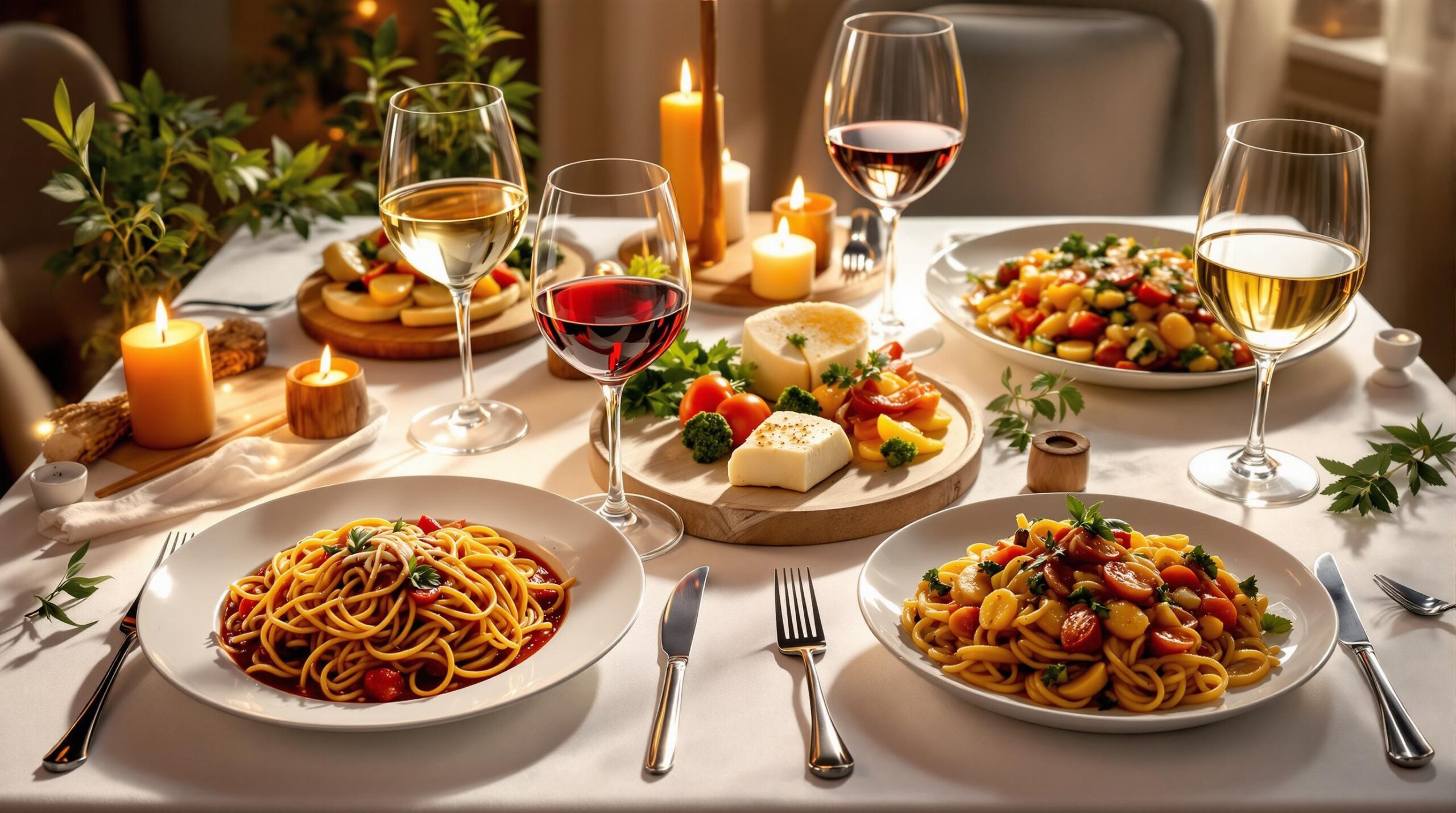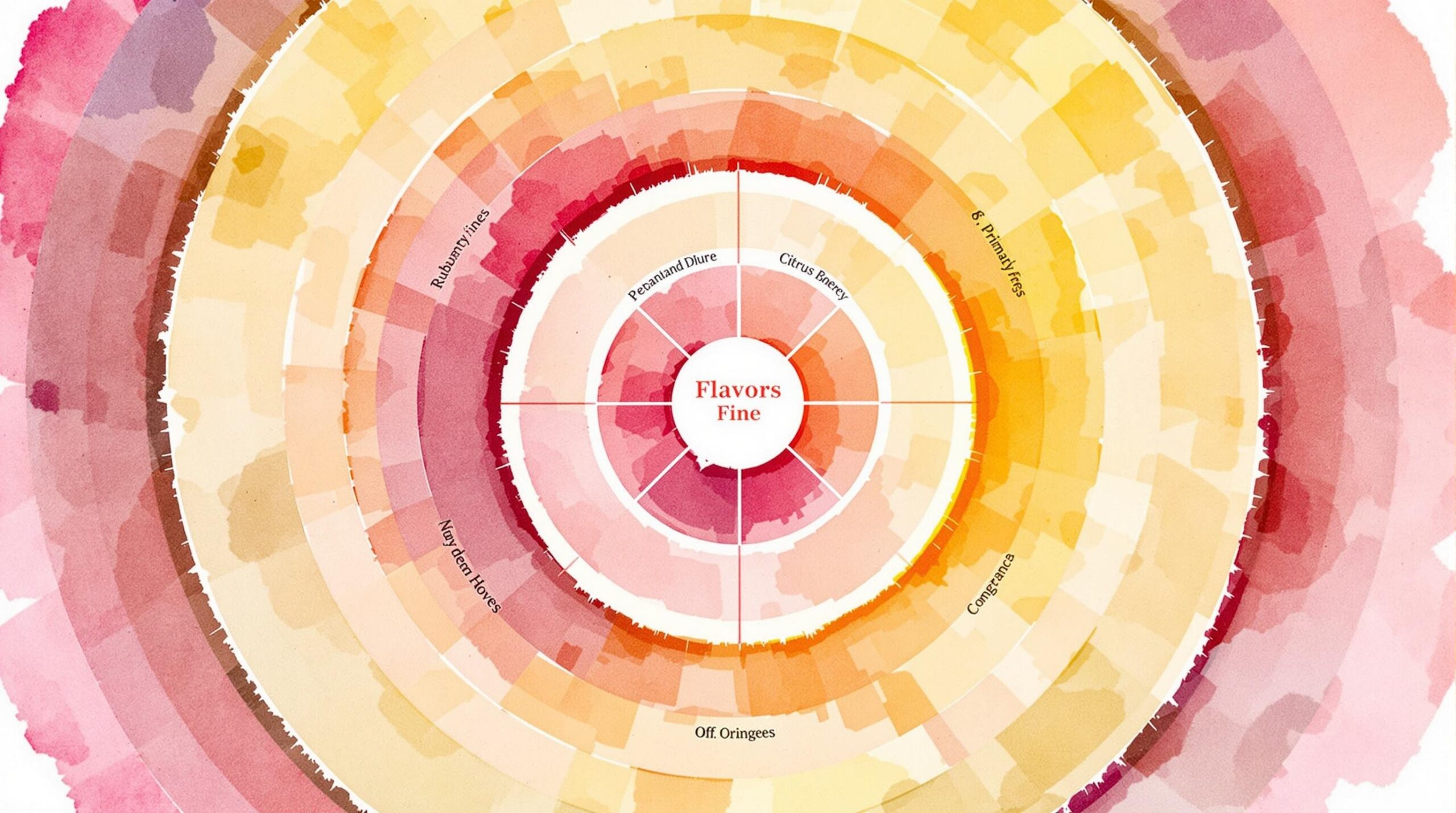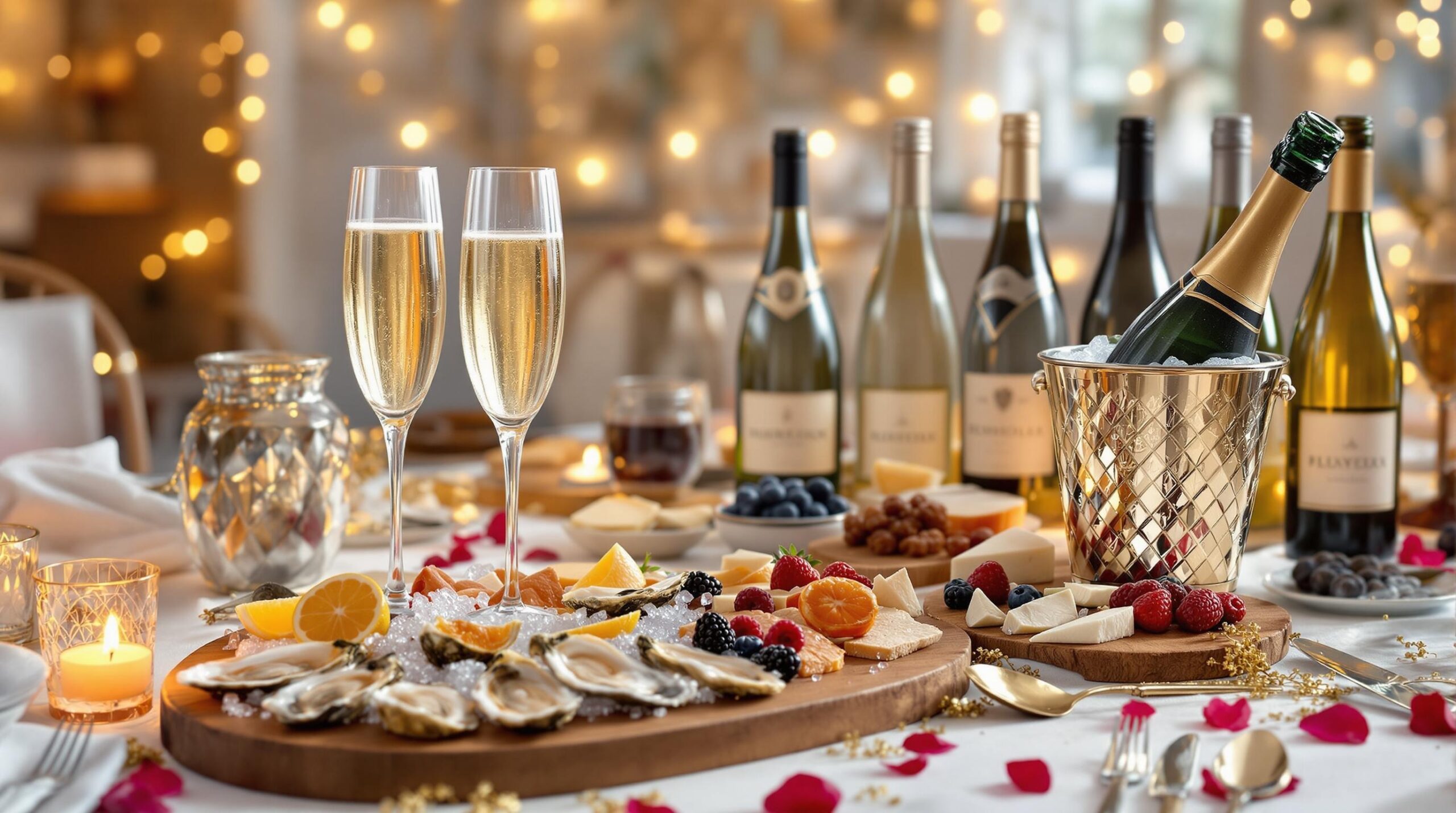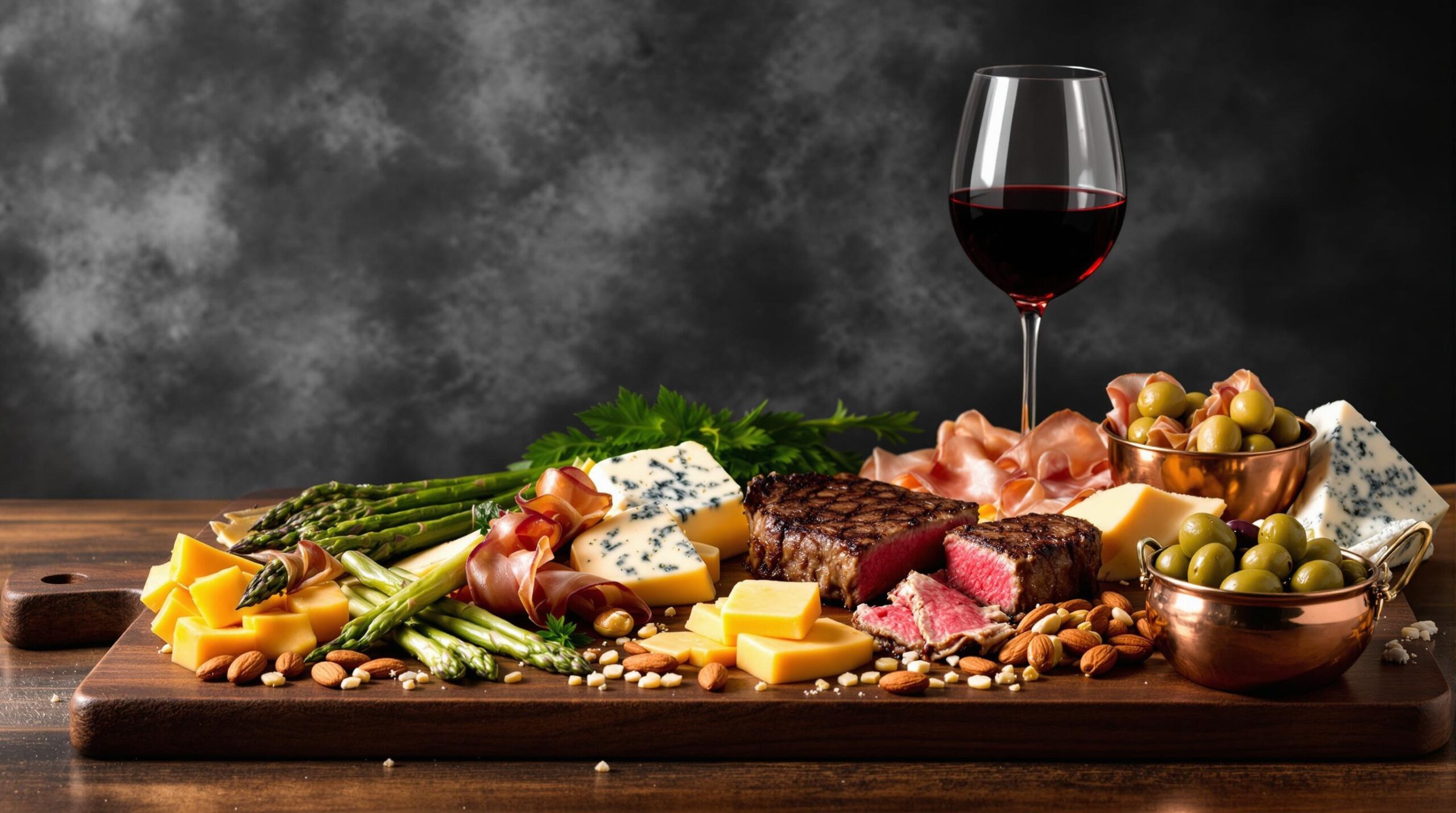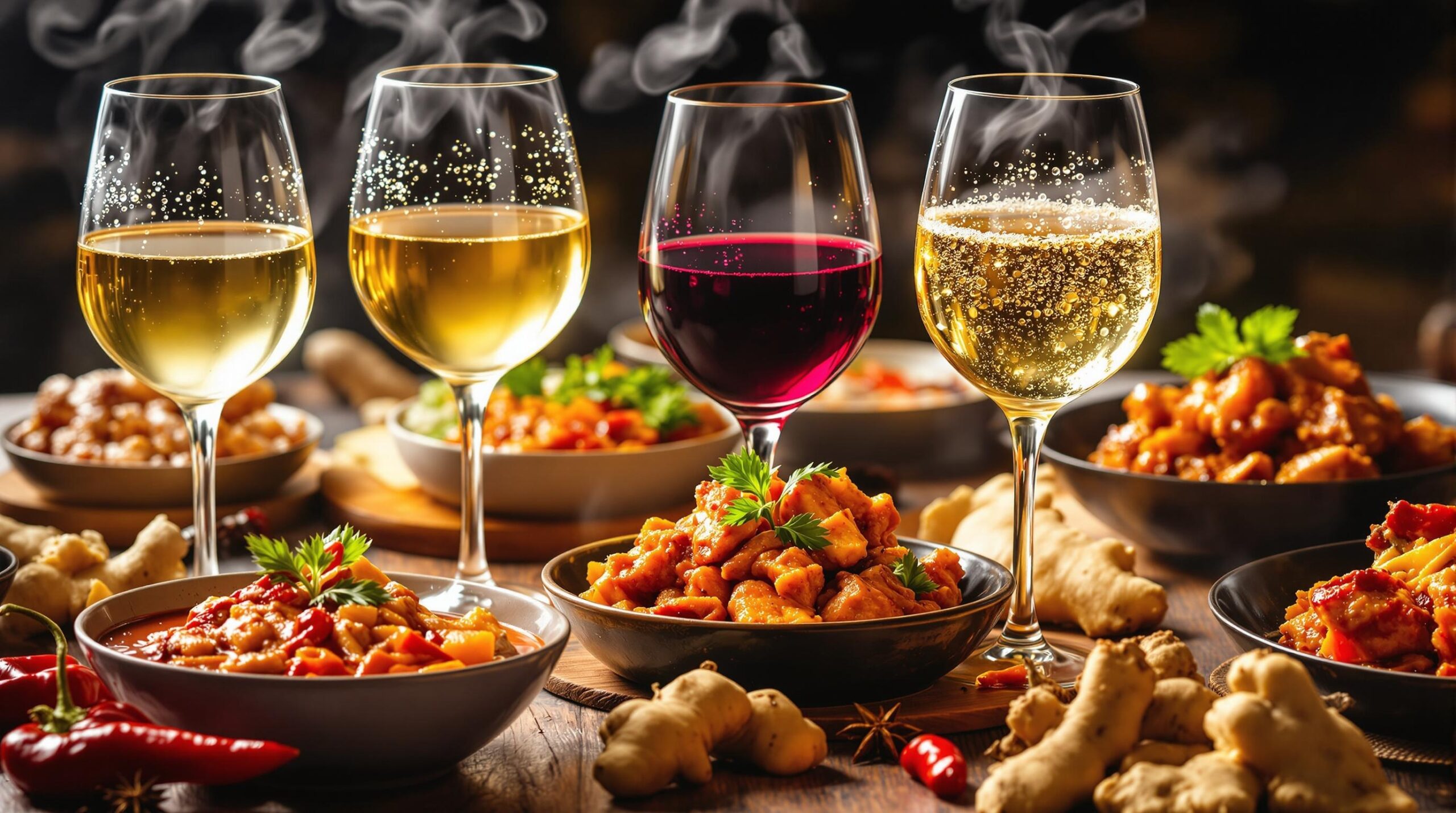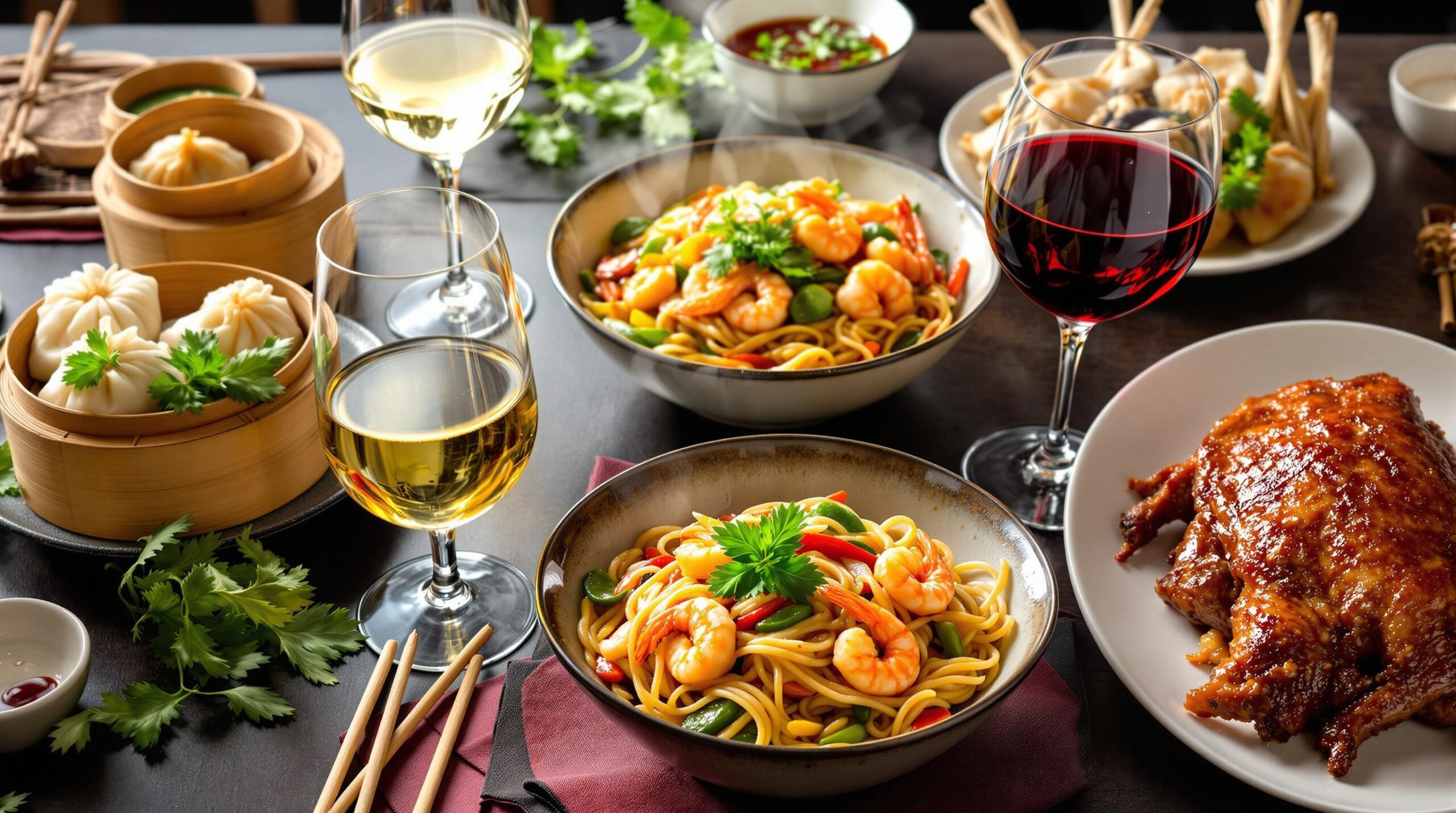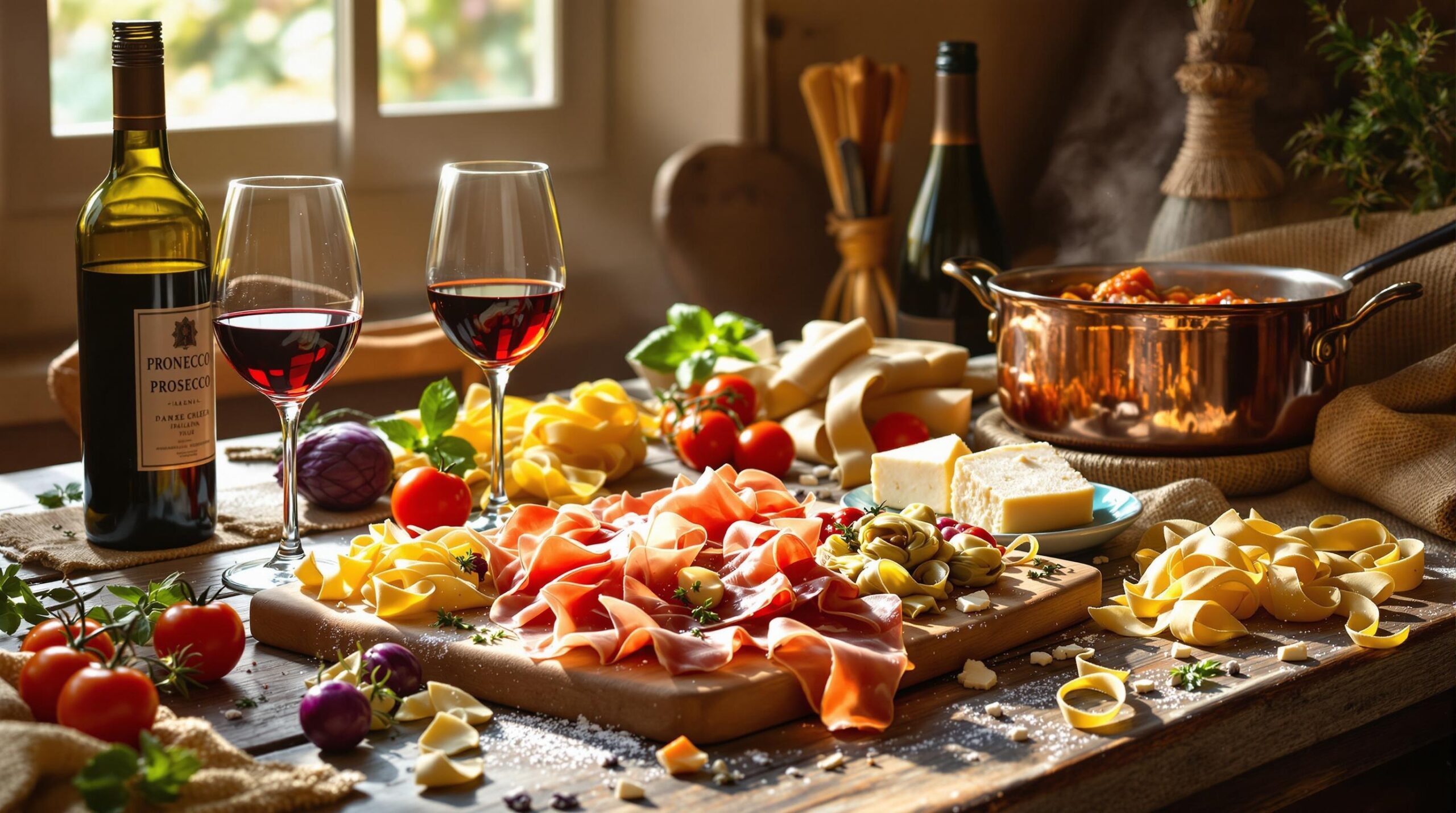French cuisine’s magic lies in its masterful pairing of food and wine. From casual bistro dining to elegant home-cooked meals, understanding these classic combinations helps create unforgettable dining experiences.
Essential French Wine Regions and Their Food Partners
Bordeaux wines complement rich meat dishes and game. Burgundy pairs perfectly with poultry and mushroom-based dishes.
- Loire Valley: Perfect with seafood and goat cheese
- Champagne: Matches shellfish and delicate appetizers
- Rhône: Works well with herb-seasoned meats and stews
Classic French Dishes and Their Wine Matches
| Dish | Wine Pairing |
|---|---|
| Coq au Vin | Red Burgundy (Pinot Noir) |
| Bouillabaisse | Provence Rosé |
| Beef Bourguignon | Full-bodied Bordeaux |
Simple Rules for French Wine Pairing at Home
Focus on regional pairings – wines often pair naturally with foods from the same area. Consider the sauce rather than just the protein when selecting wine.
- Match wine weight with food intensity
- Consider cooking methods (roasted, braised, raw)
- Account for sauce flavors and richness
These first sections provide the foundation for understanding French food and wine pairing principles. The following sections will explore seasonal considerations, cheese pairings, budget-friendly options, and practical tips for hosting French-inspired dinners.
Seasonal French Menu Planning
French cuisine celebrates seasonal ingredients with specific wine pairings for each season. Match lighter wines with spring produce and fuller bodied options for hearty winter fare.
- Spring: Asparagus with Sancerre
- Summer: Ratatouille with Provence Rosé
- Fall: Wild mushrooms with Burgundy
- Winter: Cassoulet with Cahors
French Cheese and Wine Guide
Understanding the progression of cheese service helps create better wine matches. Start with lighter cheeses and wines, moving to stronger flavors.
| Cheese Type | Wine Pairing |
|---|---|
| Fresh Chèvre | Sauvignon Blanc |
| Brie/Camembert | Champagne |
| Aged Comté | Jura Whites |
| Blue Roquefort | Sauternes |
Budget-Friendly French Pairings
Quality French wine experiences don’t require premium prices. Look for lesser-known regions and second labels from famous producers.
- Value Regions: Languedoc-Roussillon, Loire Valley, Beaujolais
- Alternative Grapes: Muscadet instead of Chablis, Côtes du Rhône instead of Châteauneuf-du-Pape
- Smart Shopping: Buy during wine shop sales, join wine clubs for discounts
Tips for Hosting a French Wine Dinner
Planning makes perfect when hosting a French-inspired gathering. Focus on timing and temperature for both food and wine service.
Service Tips
- Serve wines at proper temperatures (reds 60-65°F, whites 45-50°F)
- Plan 1 bottle per 2-3 guests
- Decant young red wines 30 minutes before serving
Menu Planning
- Choose dishes that can be partially prepared ahead
- Limit menu to 3-4 courses maximum
- Consider one showstopper dish rather than multiple complex recipes
Remember to adjust portions and wine selections based on guest count and preferences. Keep notes on successful pairings for future reference.
10 Common Questions About French Food and Wine Pairing
1. What wine goes with coq au vin?
Match this classic chicken dish with the same wine used in cooking – typically a red Burgundy or Beaujolais. For home cooking, a medium-bodied Pinot Noir works perfectly.
2. How do I pair wine with cheese courses?
Start light and progress stronger – both with wines and cheeses. Pair Champagne with Brie, Sancerre with goat cheese, and finish with Bordeaux alongside aged hard cheeses.
3. What’s the best wine for beef bourguignon?
Choose a full-bodied red Burgundy or similar Pinot Noir. The wine should match what’s used in cooking – aim for wines from the Burgundy region if possible.
4. Which wine pairs with bouillabaisse?
This Provençal fish stew pairs beautifully with local dry rosé from Provence or a crisp white Vermentino. Avoid heavy reds that would overwhelm the delicate seafood.
5. What wine should I serve with quiche?
Light to medium-bodied whites work best. Try an Alsatian Pinot Blanc or unoaked Chardonnay. For quiche lorraine specifically, a light red like Beaujolais can work well.
6. How do I pair wine with French onion soup?
The rich, caramelized flavors call for a light to medium-bodied red like Côtes du Rhône or a dry white like Chablis. The key is choosing wine that won’t overpower the soup’s subtle sweetness.
7. What wine matches with duck confit?
The rich, fatty nature of duck confit needs wines with good acidity. Choose a red Burgundy or wines from the Northern Rhône like Crozes-Hermitage.
8. Which wine works with ratatouille?
This vegetable dish pairs wonderfully with rosé from Provence or light reds like Côtes du Rhône. The wine should be light enough to complement rather than overwhelm the vegetables.
9. What’s the ideal wine for cassoulet?
This hearty bean and meat casserole needs a robust red. Choose wines from Southwest France like Madiran or Languedoc-Roussillon reds.
10. How do I pair wine with crème brûlée?
Sweet desserts need equally sweet wines. Try a Sauternes or Muscat de Beaumes-de-Venise. The wine should always be sweeter than the dessert.
Quick Tips for French Food and Wine Pairing
- Match regional dishes with regional wines when possible
- Light dishes = light wines, heavy dishes = full-bodied wines
- Consider sauce as much as the main ingredient when choosing wine
- Don’t hesitate to pair sparkling wine throughout the meal
- When in doubt, choose a versatile wine like Champagne or light red Burgundy
For home cooking, don’t feel pressured to use expensive French wines. Many affordable options from other regions can work well with French dishes. Focus on matching body and intensity rather than strict regional rules.

